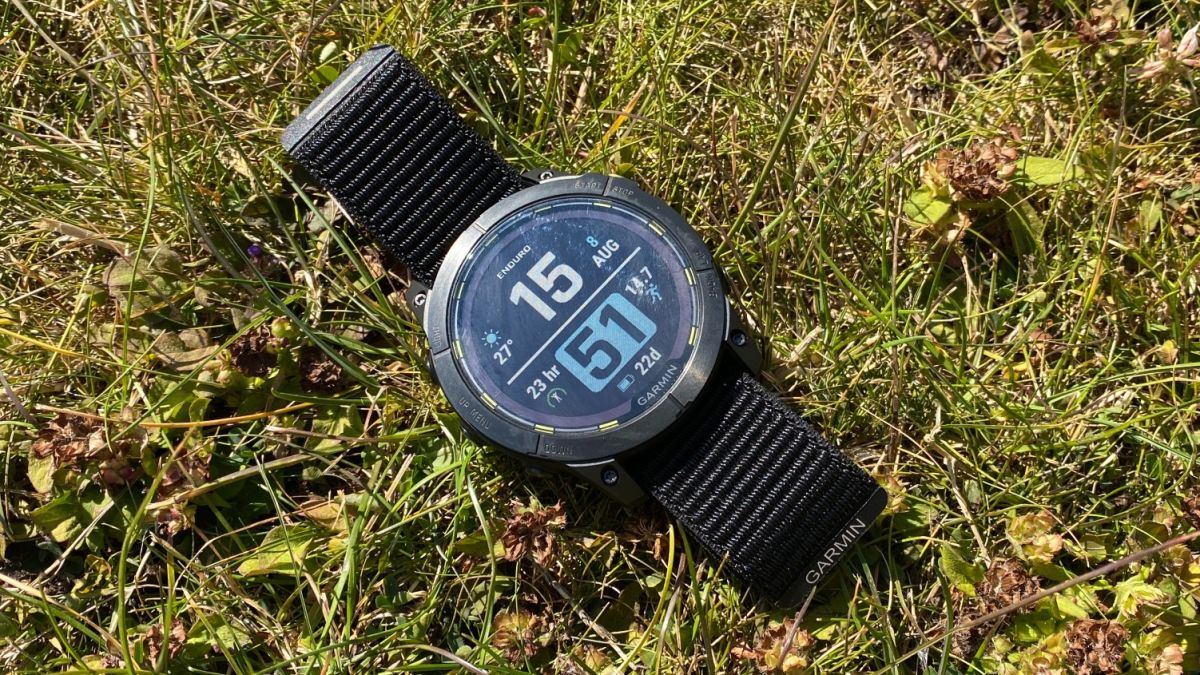The original Garmin Enduro lived up to its name by offering stupendous battery life, but unless you really did crave the joy of only charging your watch once a month, it was a hard sell compared with the best running watches like the Garmin Fenix 7.
That’s because, as I noted in my Garmin Enduro review, it was more expensive but lacked some key features like music storage and maps, compromises made presumably in order to free up room for a bigger battery.
With the Garmin Enduro 2 you no longer have to choose between features and battery life. It’s packed with all of Garmin’s best sports tracking features, and now has music and maps along with a monster battery life. It’s the new top dog in Garmin’s range and has a price to match, costing $1,099.99 in the US and £929.99 in the UK.
Garmin Enduro 2: Price And Availability
The Enduro 2 is available now and at $1,099.99/£929.99 is the most expensive sports watch in Garmin’s range (excluding the luxury Marq devices). It’s a big price hike on the original Enduro, which was $799.99/£699.99 for the steel version and $899.99/£799.99 for the titanium watch (and is now £549.99 or £619.99 in the UK), and the Enduro 2 is also more expensive than the Garmin Epix 2 (from £799.99/$899.99) and Fenix 7 (from £599.99/$699.99).
Buy from GarminUK (opens in new tab) | Garmin US (opens in new tab)
What’s New?
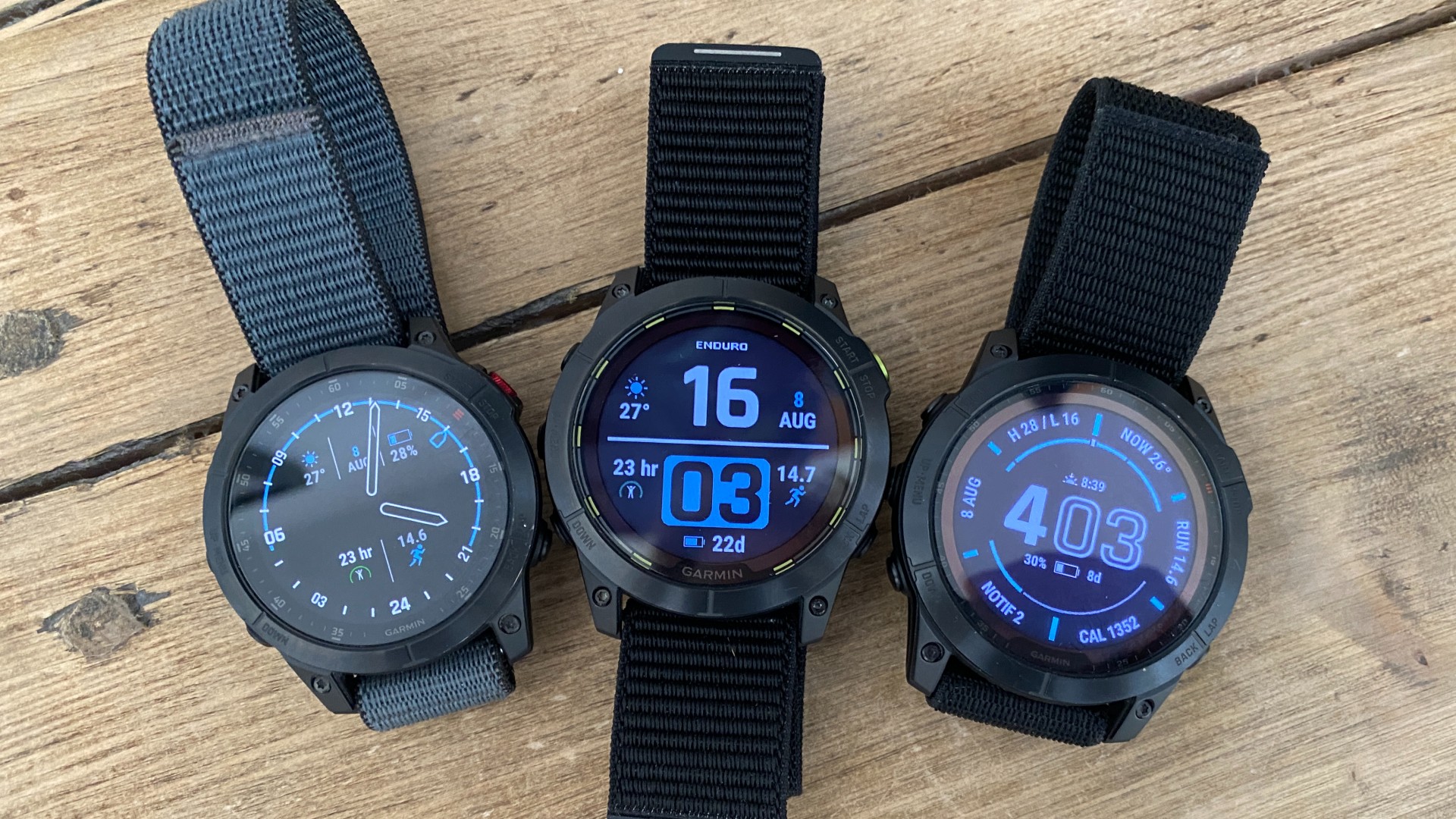
The design of the Enduro 2 is similar to the original Enduro and Fenix 7 range, but it keeps things simple by only having one model. This has a titanium bezel and rear cover, and it’s a little thicker than the original Enduro at 15.6mm vs 14.9mm. The case diameter is 51mm and it has a 1.4in transflective display which is now a touchscreen, with solar panels around the outside.
On the top of the case is an LED torch that’s twice as bright as the one on the Fenix 7X. The torch has four brightness settings, plus a red-light mode.
Battery life is the star feature of the Enduro range and the 2 is a monster on this front, lasting up to 34 days in smartwatch mode (46 days with solar) or 110 hours of GPS-only tracking (150 hours solar).
Those numbers come down if you use the new GPS modes which include multi-GNSS tracking (all-systems-on), multi-band, multi-GNSS tracking and a SatIQ mode that automatically switches you between GPS modes so you have the accuracy of multi-band tracking when you need it, but save battery in standard GPS mode when that’s good enough. This is a great idea for extending battery life without sacrificing GPS quality, and is available on the Epix 2, Fenix 7 (sapphire models) and Garmin Forerunner 955.
Even in the most accurate multi-band tracking mode, the Enduro 2 is listed as lasting up to 68 hours, or 81 hours with solar. That’s a big jump on even the Fenix 7X, which lasts 36 hours in multi-band mode (41 hours with solar).
Probably the feature that was most missed on the original Enduro was Garmin’s excellent maps and navigation aids, and those have been added to the Enduro 2. The 2 also offers music storage and the ability to link with streaming services like Spotify (if you’re a subscriber) to wirelessly transfer music to the watch. Streaming music from the Enduro 2 to wireless headphones will reduce battery significantly. Garmin quotes 20 hours of battery in all-systems-on GPS mode with music.
The Enduro 2 also debuts a training metric called grade adjusted pace (GAP), which gives you a current pace reading that takes into account the incline you’re on, so it will be slower than your pace on downhills and faster on uphills. It can help you pace yourself over hilly routes, which will naturally appeal to the adventurous ultramarathon crowd.
As you’d hope given the price, the Enduro 2 also picks up the other smart features and training analysis seen on Garmin’s other flagship watches, including Garmin Pay and training readiness. Not every feature was available on the watch before launch, but they are due to arrive in updates this year.
first impressions
I have had the Enduro 2 for five days ahead of its launch and have used it for four runs and a couple of yoga sessions, comparing it with the Garmin Epix 2 paired with a Garmin HRM-Pro Plus strap, which has proved a very accurate pairing for GPS and heart rate testing in my experience.
The Enduro 2 is a good-looking and surprisingly light watch – my titanium review sample weighs 2.5oz/70g with the nylon strap (2.25oz/64g without), exactly in line with Garmin’s specs, and sits on the wrist comfortably for a big watch.
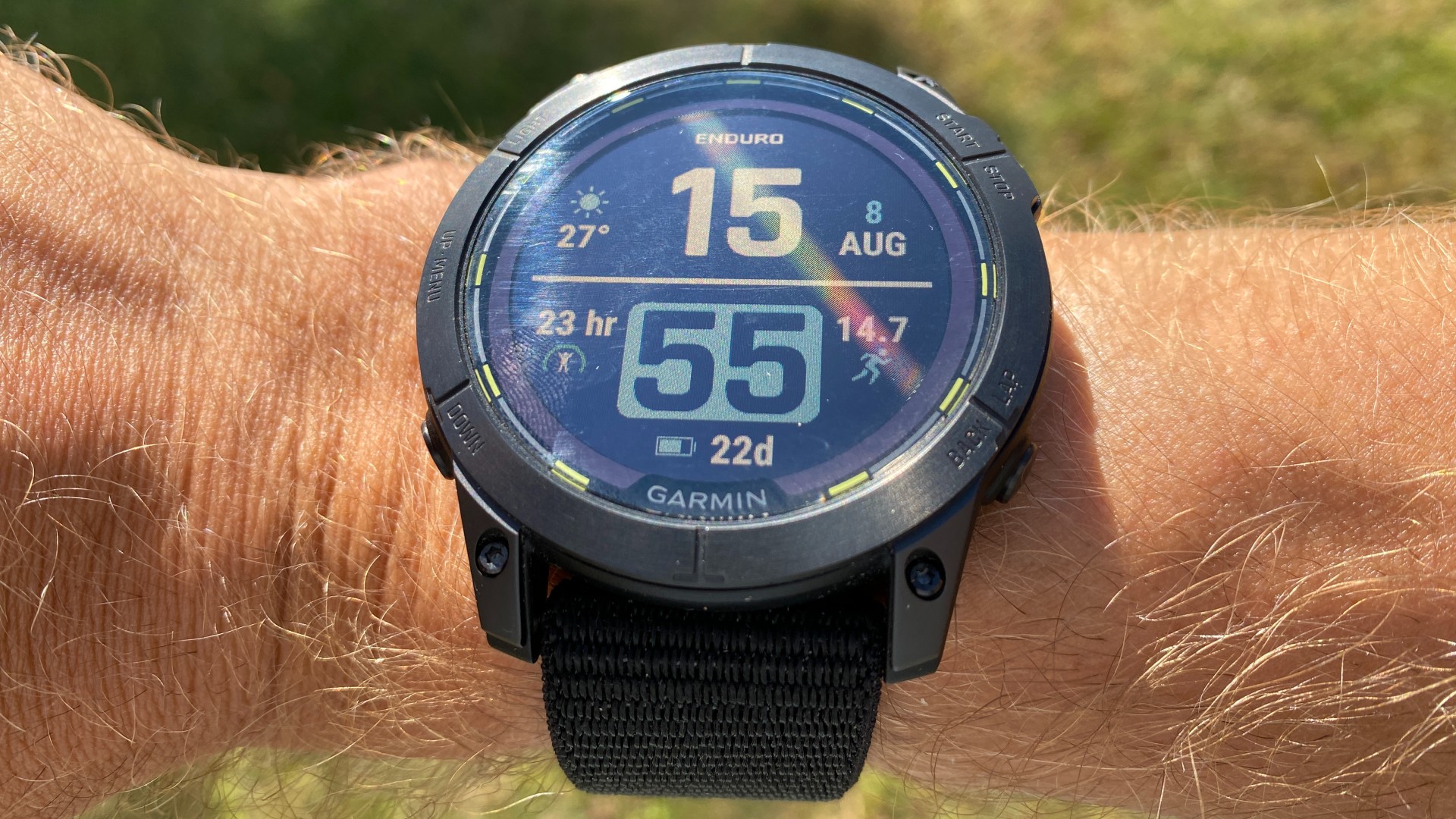
The screen is a little dull, as is the case with other Garmin watches with solar charging and sapphire screens, but it’s still clear and easy to read in direct sunlight, even if the Epix 2’s AMOLED screen is considerably better. As with the Epix 2 and Fenix 7 the touchscreen is handy at times when scrolling through widgets, but mostly I still use the buttons.
I have been testing the watch in the SatIQ GPS mode and the accuracy has been very good and comparable to the GPS tracks produced by the Epix 2 in multi-band mode. I would probably still err on the side of caution and select multi-band for important workouts and races, but it seems the SatIQ mode is a useful option to save a bit of battery life while still getting great GPS accuracy.
The heart rate tracking hasn’t been quite so good, and the results have been more or less in line with what I’ve experienced with all large sports watches. I tend to get a high reading at the start of workouts, and though this will usually settle down and track in line with a chest strap’s measurements, it can be enough to skew how the entire workout is rated. For example, on one long run with the Enduro 2 it read too high for the first couple of miles which meant my easy run was assessed as a tempo run in Garmin’s training analysis and extended my recovery time by 20 hours compared with what the Epix 2 (linked to a chest strap) gave me after the same run.
I will be pairing a chest strap with the Enduro 2 for my extended testing to get the most from the training analysis, and if you’re spending this much on a watch I’d shell out the extra for a strap to get better accuracy ( you’ll find plenty of options in our selection of the best heart rate monitors).
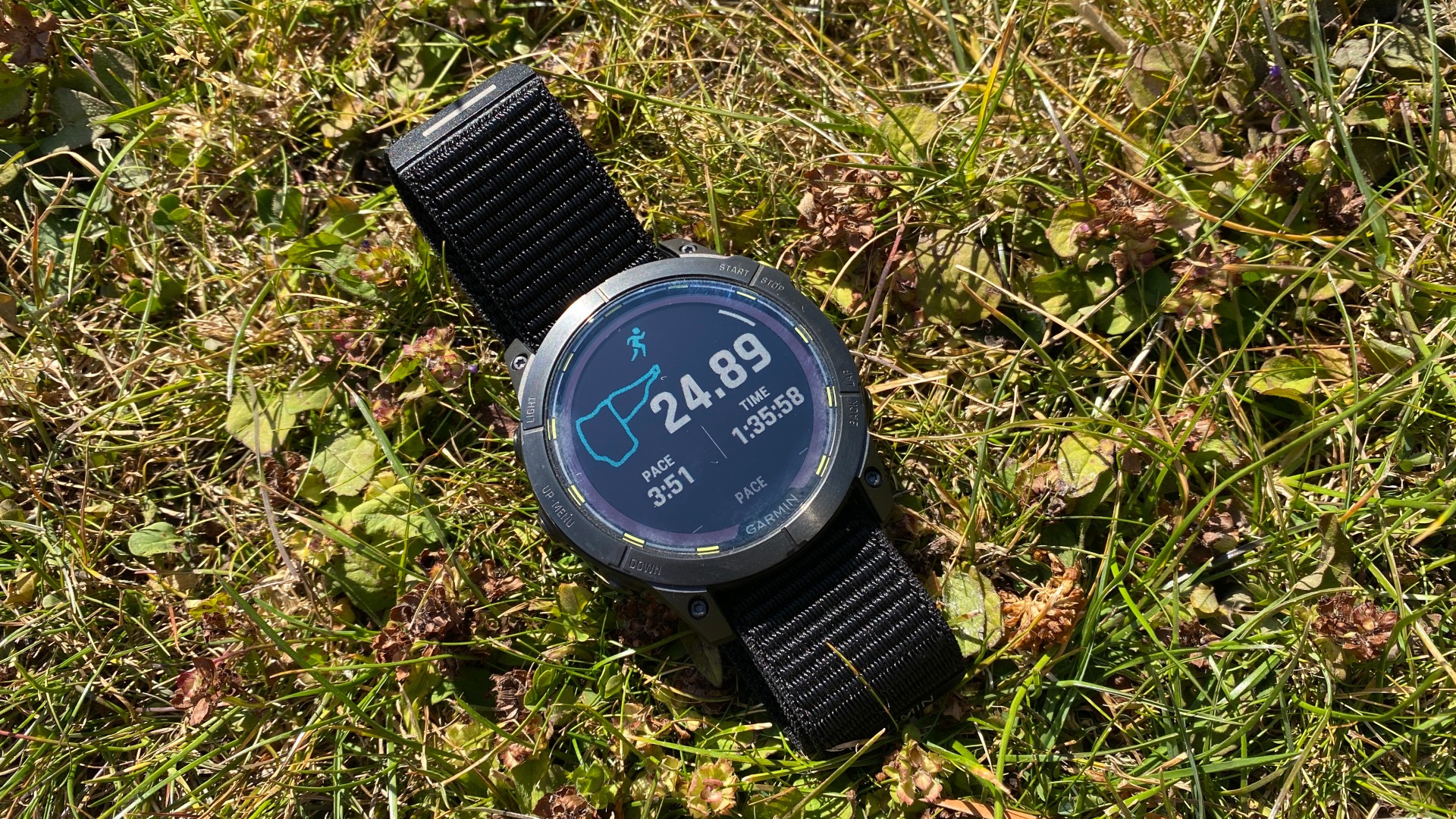
The mapping features are in line with what you get on the Fenix 7, Forerunner 955 and Epix 2, and they are excellent. Along with turn-by-turn directions you get helpful details like the distance to your next fork, insights into the climbs and descents on your route through ClimbPro, plus the Up Ahead feature where you can mark the key points on your route, like aid stations in ultramarathons, and see the distance to them.
Grade adjusted pace (GAP) is a new feature arriving to Garmin’s range with the Enduro 2, though I have used it on Coros watches before and you can see it in Strava after a run. It’s a useful stat and one that I find can help make sure you don’t overdo uphills on easy runs or relax too much on downhills during hard runs. I think it would be more useful still if the watch showed average GAP for your run, or lap GAP, to help you keep your effort even over undulating terrain as current GAP, like all current pace stats, can be a bit jumpy.
It’s also limited because it can’t take terrain into account – a hard climb on muddy ground or a steep descent on technical, loose trails are both very different to running the same incline on a flat, good surface.
I didn’t really use the torch on the Fenix 7X much, but there were occasions when it came in handy, and the brighter torch on the Enduro 2 will be useful for camping and as an extra light when running at night. I don’t do too much camping or night running myself, but it’s been helpful when getting up in the night to see a distressed toddler without tripping over things.
Having only used the Enduro 2 for a short time it’s hard to say too much about the battery life, but it has dropped to 74% after five days. That period has included tracking around 5.5 hours of running using the SatIQ GPS setting and a couple of indoor workouts, and I increased the screen brightness for both general use and during activities, which knocked a couple of days off of my estimated battery life.
I’d expect the battery to last longer than the 20 days my early use suggests, since this five day period included two long runs, and the watch estimates I have 22 days of use left. However, it will be interesting to see how much the Enduro 2 outlasts the Fenix 7X, since I did find that watch would get through three weeks.
Early Verdict
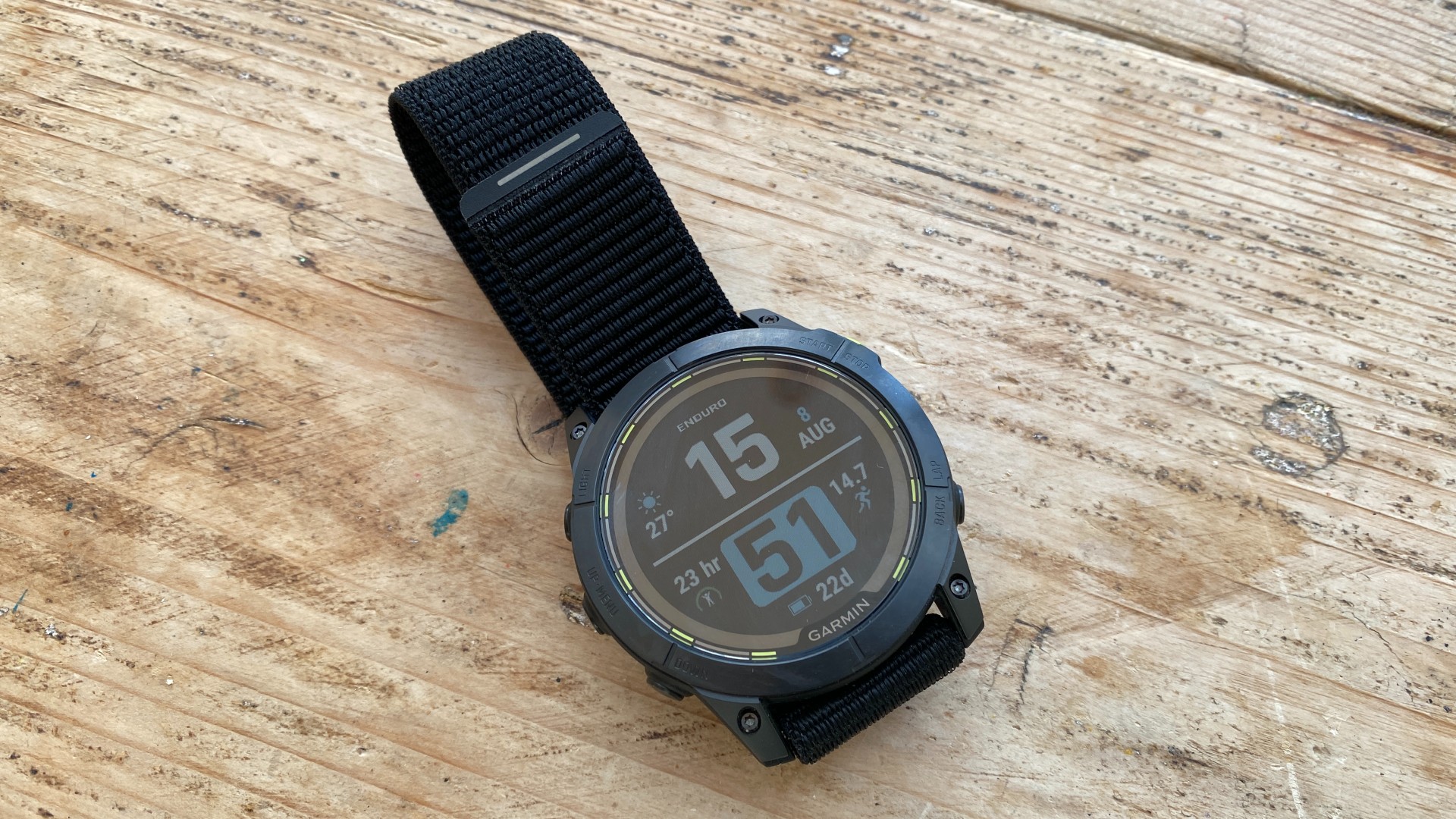
Garmin’s range of sports watches is big and confusing and the Enduro 2 brings some welcome clarity. It has, or is getting, all of the top-of-the-line features and has a better battery life, and so it costs the most.
The only thing it doesn’t have is the bright AMOLED screen on the Epix 2, which will make the Epix 2 more attractive to many runners and triathletes, though ultra-distance athletes will certainly be attracted to the extra juice on the Enduro 2.
It is so expensive, however, that it is tempting to lose a little battery life and opt for the otherwise equally full-featured Fenix 7 Sapphire Solar watches for less, or pick up the Epix 2 and enjoy that lovely screen even if you have to charge it more often.
The Enduro 2 is a big step up on the original Enduro though and having maps on your wrist is fantastic, especially with the useful extra features Garmin brings to navigation.
Garmin is pretty dominant at the top end of the sports watch market, and the Enduro 2 is another appealing option for those who want the best of everything and longer battery life. Key to me will be how much longer it does last than the Fenix 7X, but given how long it takes to run the Enduro 2 down, that will have to wait for the full review.
